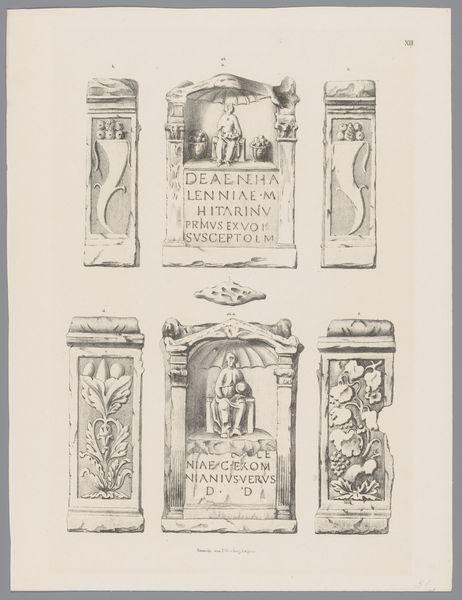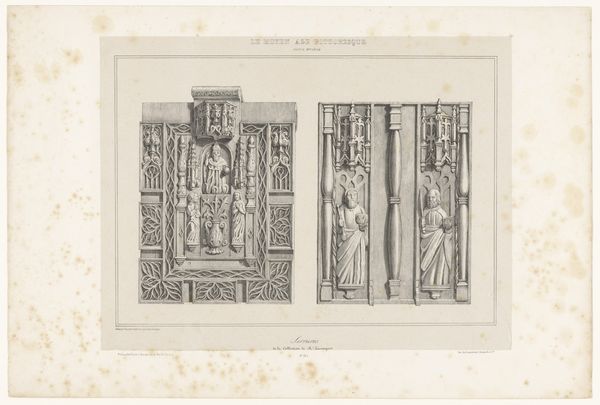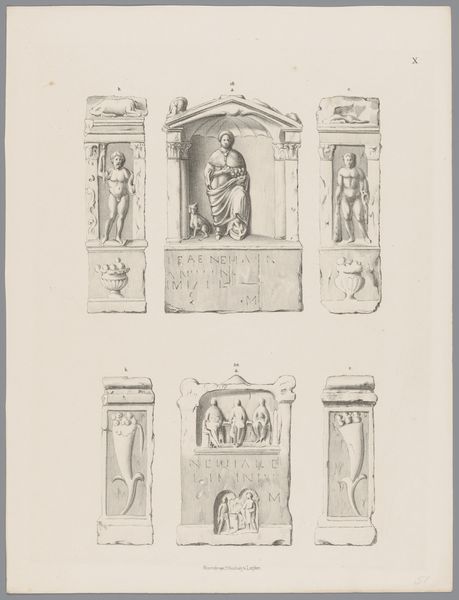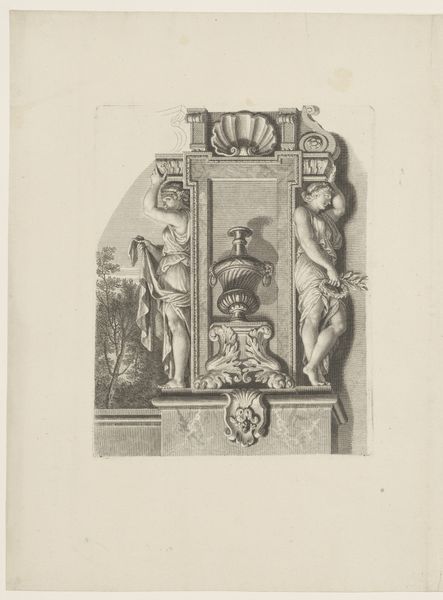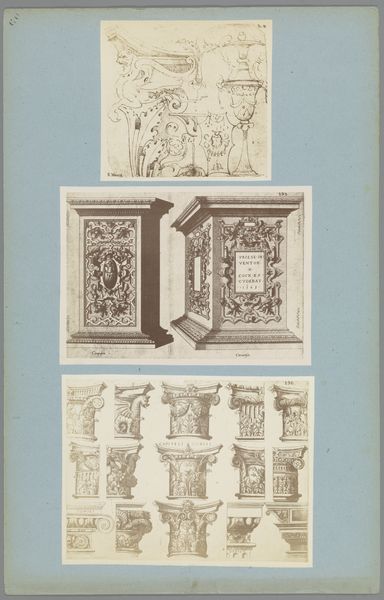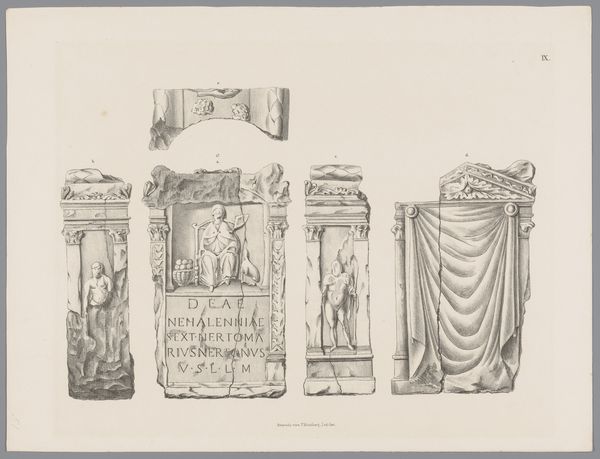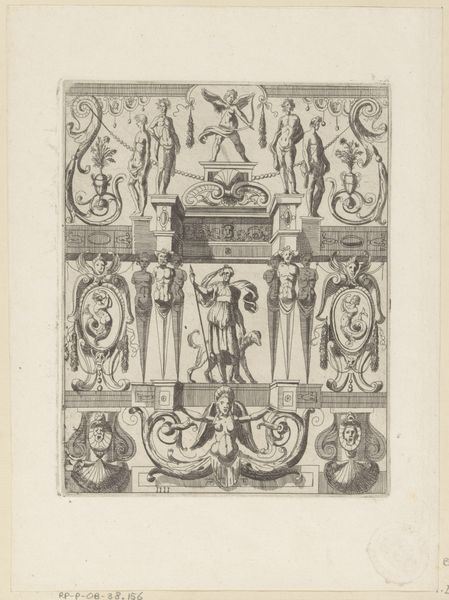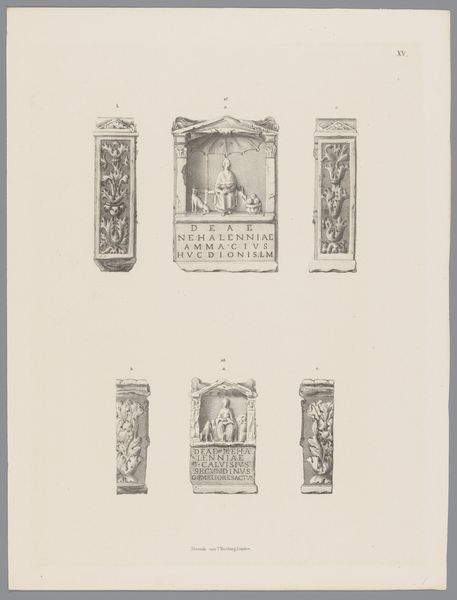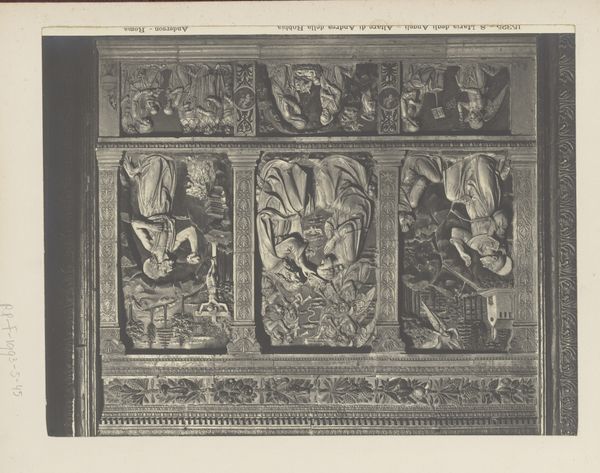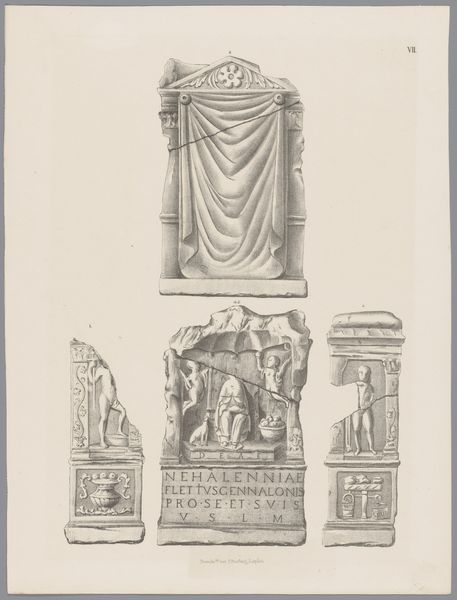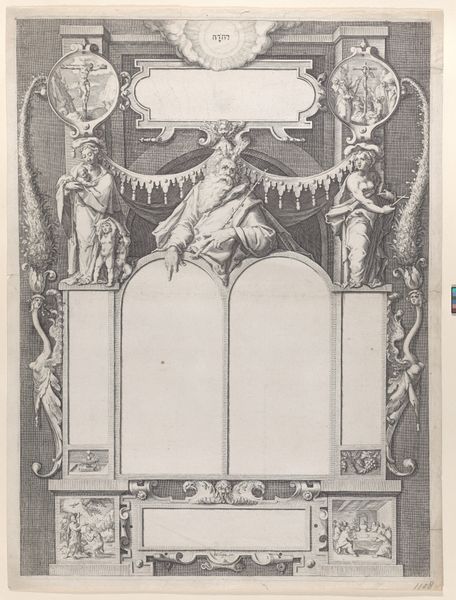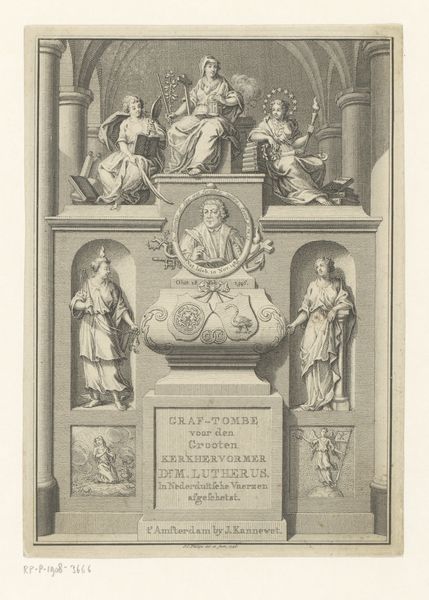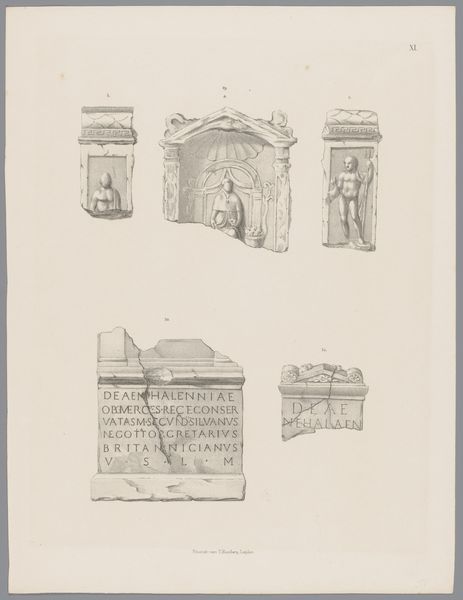
print, etching, relief, sculpture, engraving
#
allegory
# print
#
etching
#
greek-and-roman-art
#
relief
#
landscape
#
figuration
#
geometric
#
classicism
#
sculpture
#
history-painting
#
academic-art
#
engraving
#
realism
Dimensions: height 270 mm, width 360 mm
Copyright: Rijks Museum: Open Domain
Editor: Here we have "Nehalennia-altaar, pl. VIII," an etching made between 1843 and 1845 by Tiemen Hooiberg. It depicts what appears to be three panels of Romanesque relief sculpture. The composition feels very formal and academic, almost like an archaeological record. What do you make of it? Curator: What immediately strikes me is the impulse behind recording these reliefs at this moment. The 1840s were a time of burgeoning nationalism across Europe, and with it, an intense interest in recovering and documenting local histories and artifacts. How does this impulse influence Hooiberg's artistic decisions? Editor: That's a fascinating point! So, you're saying it’s not just about representing the sculptures themselves, but also about contributing to a larger project of historical and national identity-building? Curator: Precisely. Consider the medium: etching, a process allowing for detailed reproduction, aligning with the scientific aspirations of archaeology at the time. And notice how Hooiberg meticulously renders the weathered surfaces, almost emphasizing their authenticity and age. Why reproduce these objects so faithfully? What role might the presumed “objectivity” of this printmaking medium have played? Editor: To give it authority? To convince the viewer that this is a truthful depiction of the past? It makes me think about who this print was intended for, and how it might have shaped their understanding of local history. Curator: Exactly! The circulation of these images played a crucial role in constructing a shared understanding of the past and its relevance to the present. Were these images used for scholarly study, or for broader public consumption, to instill a sense of civic pride? What might each tell us about the goals and desires of the Dutch state at that time? Editor: That really reframes how I see the image. It’s more than just a record; it’s an active participant in shaping cultural memory. Curator: Precisely. It's a reminder that even seemingly objective depictions are deeply embedded in social and political contexts. Editor: I hadn’t considered how the act of documentation itself could be a political act. Thanks, that's a totally different lens to view the image through.
Comments
No comments
Be the first to comment and join the conversation on the ultimate creative platform.
